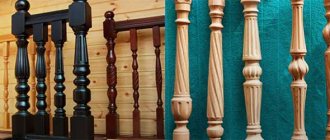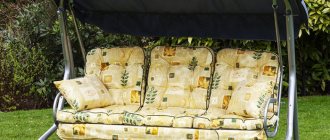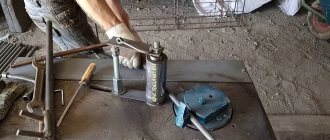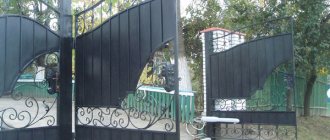Blacksmithing is one of the oldest methods of metal processing. However, even in our age of high technology development, it has not lost its significance and is even gaining great popularity.
Forging with your own hands is a rather difficult technological process; for this you need to know at least the basic techniques for working with a workpiece, as well as the rules for heating and hardening the metal. You also need to have an idea of how to use the equipment. What skills do you need to have to make products using the blacksmith method and how to forge metal?
A little history + interesting facts
Interestingly, one of the most common surnames in the whole world comes from blacksmithing. In Russia it is Kuznetsov, in France Ferrand, and in Britain Smith. This shows how widespread this craft was and remains in this world.
It is generally accepted that the basis of the word “cunning” is a verb such as “forge.” The fact is that most tribes and peoples believed that blacksmithing was something obscure and shrouded in a terrible secret. The blacksmith (cunning) made forges, knitted fetters, and over time the word “cunning” became synonymous with wisdom, skills and abilities. After some time, it became synonymous with evil plans and intentions. At the same time, such common phrases as “forge your happiness” and “forge your destiny” began to appear, which are exclusively positive in nature.
With the large-scale unification of production and the use of such types of equipment as stamping, rolling, the use of control through computer software almost ousted blacksmithing from the industry, but, nevertheless, it remained and is now incredibly popular among designers, as well as specialists who are involved in design interior A modern blacksmith knows how to make products that will be used as fences, stairs, as well as in the role of architectural design of buildings, etc.
In the 21st century, this has led to the fact that the design of forged products is done in special 3D design programs, which are designed to develop parts for various purposes. Open forging is used for many types of metal. Using this operation, it is possible to make household items, as well as items that are of exceptional artistic value.
By the way, this method of metal processing is also used by jewelers. By the way, gold is considered the most malleable metal, since it has incredible ductility, fluidity, ductility and many other properties that make it possible to make incredibly beautiful and almost priceless products from it. You can look at photos and videos of forging metal, in particular gold. In practice, only two types of forging are most often used - cold and hot.
Style matching
Forged gazebos, benches, arches and bridges are very popular, as with their help you can add variety and fresh notes to almost any landscape design. These decorative elements allow their authors to bring to life a variety of creative ideas and fantasies.
However, we should not forget about style consistency, which must be carefully observed. The selected samples of forged products should in no way fall out of the general style of the space and the buildings located on it. It is necessary to carefully study the selected samples of artistic forging. Otherwise, the selected element may not fit into the overall picture and look foreign, even if it is very beautiful in itself.
As a rule, wrought iron products go very well with almost any type of landscaping. French parks and English lawns easily accept this style; moreover, such products emphasize their elegance, and sometimes pretentiousness. For the Russian style of designing personal plots, such decorative elements are as typical as, in fact, for the Italian flavor with marble pools and fountains.
An important role here is played by the ornament itself, as well as the number of forged elements in it. The abundance of all kinds of small details, the intricate and lush design is not suitable for every style. The Baroque style is suitable for a plot with a large territory, where the house and other buildings are made in the same style. At the same time, there are no special restrictions for a light and sophisticated product. It fits organically into any design.
Basic methods of forging metal
Free forging can be done if the metal is heated to the required level. This method is also called hot forging, and until recently it was the only and main method of producing forged parts. But over the past few decades, the cold forging method has become no less popular. It differs from hot in that its use makes it possible to save on production sites; there is no need to maintain an energy-consuming forge in working order, etc.
Hot forging
As already mentioned, hot forging is possible if the metal is heated to temperatures where it changes its strength characteristics and becomes plastic, which makes it possible to process it relatively easily using impact tools and other devices. The hot processing method involves the use of special metal processing technologies, which make it possible to make the finished products more diverse.
But besides the advantages, there are also some disadvantages of the method. These include the fact that heating the metal requires the presence of a forge or muffle furnace. Let us note that such equipment, in addition to its price, will be expensive in the future when used, since you will need to pay for its maintenance and fuel.
Also, using an open source of fire is far from a safe activity and requires craftsmen to adhere to increased safety measures. In addition, hot forging requires that the craftsman have certain knowledge and skills to understand the temperature parameters of different types of metal.
Hand forged
Hand forging of metal must be done in special workshops that are equipped with everything necessary.
The list of equipment includes the following equipment:
- Air exhaust system.
- Muffle furnace or forge.
An anvil, which is a large metal pig (and weighing up to ¼ ton) may have technological devices such as calibrated holes or horns. To make an anvil, 45-number alloy steel is required. On an anvil, you can forge metal with your own hands and give heated workpieces the required sizes and shapes. In addition, you can even forge sheets on an anvil.
Cold forging
Most cold forging work is performed on equipment designed according to special drawings. You can list a specific list of equipment that should be used in cold metal processing. Typically, such equipment can show its effectiveness when performing a large volume of work for the architectural design of structures and buildings.
Among the equipment that is used to produce products using the cold forging method, we name the following:
- Torsion bar, with it you can twist the rod around its own axis.
- Wave, wavy parts are made on it.
There are only a dozen units in the equipment park for cold forging. Some of them can work from the operator's muscular system, while others work from the drive. Some craftsmen make similar equipment themselves, and also create modifications.
Homemade “Snails”
In essence, this is a modernized bending machine (pipe bender), but these improvements make it possible to easily make curls from fairly thick rods (up to 10-12 mm cross-section) and repeat them with a high degree of accuracy.
One of the homemade cold forging machines
These cold forging machines have several designs, but the easiest to implement is the one with a round table with a central leg. A lever with rollers on bearings at the end is movably attached to the leg. They make the bending process easier.
The table surface can be made of steel sheet with a thickness of 10 mm or more. For the leg, you can use any thick-walled round pipe. It is important to make the structure stable, since lateral forces will be applied, so side posts, spacers, and a stable base are needed.
Yandex.RTB RA-1479455-8 Drawing of a cold forging machine “Snail”
It is easier to make a lever from a square pipe with a thick wall - at least 2-3 mm. The cross-section of the pipe is 25*40 mm or so. Attaching the lever to the leg can be done on a bearing, or you can simply take a small piece of thick-walled pipe of a larger diameter, put it on the leg, and weld a stop strip on the bottom so that the lever does not fall down. The option with a bearing gives easier movement, but if there is lubrication, the second option also works.
Lever mounting option
The shape of the lever is also important. The lever is double, the upper part is working, the lower part is supporting. Wherever there are connections, it is advisable to add reinforcement, since the efforts are significant.
The lever must be reliable, with reinforcement
A mandrel or jig is fixed on the table - the shape along which the curls are bent. They are made in different diameters so that you can make curls of different diameters. Such mandrels can be prefabricated to form a larger number of bends. Each such sample must have rods that are installed in holes in the table. This is how this template is fixed. Also, its shape must be designed in such a way that the end of the rod is well fixed in it.
Variant of conductors for the snail
Often, mandrels are machined from a metal circle of a suitable diameter using a grinder, but there are options made of metal with steel plates welded onto it, curved accordingly.
How to make a similar machine for cold forging is in the next video. There is also a good description of how to bring the ends of the workpiece to a decent state - ordinary raw edges look very rough. There is special equipment for processing them, but, as it turns out, you can do it without it.
Types of blacksmithing
Metal forging is performed using a mechanical or manual impact tool - this can be a press or a sledgehammer, and the press can be powered by a hydraulic, electric or pneumatic drive. Stamping and forging make it possible to obtain parts that vary in weight and size.
The use of forging makes it possible to increase the mechanical parameters of steel and optimize the internal structure. It is for this reason that parts such as connecting rods are made using forging or stamping. Forging can be divided into the following types - manual and machine. For manual work, hand-type percussion tools are used, for example, a sledgehammer and a hammer, and all processing work is performed directly on the anvil.
Machine forging is required for bulky and heavy workpieces, which are then processed under pressing equipment, while smaller ones with low weight can be processed with a hammer.
Processing of manufacturing materials using blows, in turn, is divided into processing in stamps and free forging. The second type involves compression of the workpiece between the base and the press. The formation of the finished product occurs thanks to the auxiliary tools used by the blacksmith. When stamping, the metal receives dimensions and shape within the die of the tool.
In order to make individual parts, you must first make a separate stamp. In fact, stamping and forging are intermediate operations in technology that help make workpieces, which in the future will be used and further processed by welding or milling.
Corrosion of metal
Metal corrosion is one of the important factors affecting the product. Elements of artistic forging of metal should be treated with painting oils so that corrosion does not appear for a long time.
On more expensive products, a special metal cleaning machine is used before painting. Despite the cost of such work, this is one of the best means for cleaning metal from rust and corrosion.
If the budget allows for expensive metal cleaning work, then you can afford expensive painting. Typically, for such work, zinc-containing oils are used, which can penetrate the top layer of metal and prevent moisture from affecting it.
Types of modern equipment
Forging and stamping equipment
On an industrial scale, a lot of forging and stamping equipment is often used, which can be classified according to the following parameters:
Temperature of the workpiece being processed. For this purpose, forging machines are used, as well as equipment for cold and hot stamping (volumetric and flat).- For operations performed on equipment. They can be divided into main, preparation and finishing KShO.
- By type of supply and removal of finished products from the workspace. In practice, they use equipment on which all the described operations can be performed in manual, semi-automatic and automatic modes.
- By type of drive. Stamping machines and presses can be powered by compressed air, hydraulics, or electricity.
- According to the key parameter, this is usually the nominal force that is created using the press, or the working torque.
Induction heaters
Before hot working (hot forging of metal), the workpieces must be heated to a certain temperature level. Various types of heating equipment are used for this task, and this list includes induction heaters. In them, the workpiece is preheated before stamping, forging, bending and other operations.
Please note that this form of heating has a number of advantages over other heating methods, for example, over electric or gas.
In particular, they note:
- The use of induction type heaters makes it possible to reduce energy costs and this is important, especially with the constant increase in tariffs, it also makes it possible to make the product cheaper, due to which sales will increase.
- The use of heaters makes it possible to increase labor productivity, since induction heating makes it possible to reduce the time spent warming up the part.
- In automatic furnaces, due to the accuracy of installation and positioning of the workpiece in the inductor, the heating accuracy increases.
- Heating the workpiece in such furnaces is characterized by a small amount of scale, which has a positive effect on the service life of the stamping tool.
- Installing induction-type equipment makes it possible to free up space in production premises.
Product manufacturing process
It will be necessary to create a metal welded structure using rolled metal or metal profiles. Subsequently, it will be decorated with artistic forging details. You will need:
- source of electricity;
- a flat surface suitable for assembling the product;
- grinder with metal brushes, as well as cutting and grinding wheels;
- marker;
- hammer;
- two studs;
- non-stretch rope;
- welding machine;
- mask;
- gloves;
- electrodes.
It is better to use rolled metal with a small cross-section, as it will be easier to bend without the use of special heating. You should select a drawing in advance. Don't choose overly complex designs. Because it is very difficult to work with such a material as metal, especially when doing it for the first time. Metal should be purchased with a (small) reserve, having calculated the need for it in advance. Please note that the length of a standard metal rod is 6 meters.
It is best to process the metal right away , otherwise it will be much more difficult to do it later. It must first be cleaned of rust using a metal brush placed on an angle grinder.
You will then need to assemble the frame using a flat surface for this process. Its size should be calculated based on the external surfaces. There will be a weld at each corner of the frame. First you need to grab one of the sides to avoid skewing the frame. A few drops of welding should be placed on the lower and upper corners, then level the diagonal by tapping on the unwelded corners. Then we weld the remaining two corners.
A drawing on a scale of 1:1 is applied to a pre-prepared flat surface. Using a rope, we measure the elements of the design, applying it to each of them, like a stencil. Thus, we will find out the length to which the metal rods will need to be cut.
To deform the workpieces, you will need the following device: two studs must be welded at a distance of 2-3 cm from each other. With their help and using a hammer, you can bend iron rods, while focusing on the stencil.
When the rods are already bent, you should lay out and assemble the design on the stencil. If there are excess parts, they should be trimmed. After which the product is welded alternately on both sides. Defects and flaws after welding must be carefully cleaned. Decorative forged elements purchased in advance that will decorate the base are welded to the places intended for them. We clean the welding areas again.
For priming, it is best to use white primer, since all the flaws are visible on it. The paint must have the same properties as the primer. Artificial aging or gilding will add a special chic to the product, which will look very similar to forged.
For those who have already become proficient in this matter, the products they produce are simply magnificent.
Caring for forged products
Forged products, like any other, need care . Being located on the street, they are exposed to various environmental influences, which negatively affects their appearance. It is advisable to paint them once every 2-3 years. It is imperative to lubricate the rubbing parts of gates, swings and gates. This way they will last much longer.
To summarize, it should be noted that everything ingenious is simple, as the famous proverb says. If you want to decorate your backyard yourself, you should bring it to life as quickly as possible. Hand-made forged products will help create a cozy and friendly atmosphere and bring bright colors to everyday life.
Hand forged
Hand forging of metal must be performed in a specially equipped workshop. The list of equipment includes the following equipment and devices:
- forge or muffle furnace;
- air exhaust system;
An anvil, which is a solid-sized (weighing up to 250 kg) metal pig, which may have such technological devices as horns and calibrated holes. For its manufacture, 45L steel is used.
On an anvil, you can forge metal with your own hands and give heated workpieces the required shapes and sizes.
In addition, there is the possibility of forging a sheet on the surface of the anvil.
Cold forging method
Most cold forging work is performed on equipment specially designed for this purpose. You can name a certain list of equipment that is used for cold metal processing. As a rule, such equipment shows its effectiveness when performing large volumes of work in the architectural design of buildings and structures.
Among the equipment used in the production of cold forging products are the following:
- torsion bar, it is used to twist the rod along its axis;
- wave, various wave-like parts are made on it.
In total, the fleet of cold forging equipment includes about a dozen units. Some are powered by the operator's muscular strength, some are powered by an electric drive. Some craftsmen are engaged in the independent production of such equipment.











